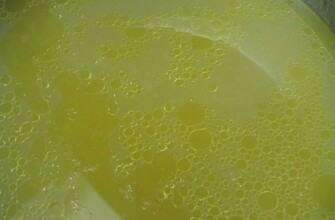 [adrotate group=”1″]Solar dermatitis is also called allergy to the sun. But, of course, the sun rays themselves are not allergens. Solar dermatitis, or photodermatitis, occurs during the interaction of UV radiation with a substance that is on the skin (eg, cream, pollen, and so on) or in the body (medicine, metabolic disease, and so forth).
[adrotate group=”1″]Solar dermatitis is also called allergy to the sun. But, of course, the sun rays themselves are not allergens. Solar dermatitis, or photodermatitis, occurs during the interaction of UV radiation with a substance that is on the skin (eg, cream, pollen, and so on) or in the body (medicine, metabolic disease, and so forth).
The first kind of allergy to the sun is called exogenous dermatitis, the second one – endogenous. Typically, solar dermatitis occurs when there is a powerful ultraviolet radiation: on sunny summer days in the central Russia and in the south. Don’t confuse it with the sunburns appearing after a too long stay on the beach. Photodermatitis may occur even after a short-term exposure to ultraviolet rays.
Symptoms of the solar dermatitis
The symptoms of photodermatitis (sun allergy) are very various and depend on its causes, a person’s age and other factors. The most common are: redness of the skin; rash; itching; peeling; hives; blisters. In severe cases, ulcers can occur.
Sometimes the skin becomes rough and swollen. Crusts and even bleeding wounds can form. If the symptoms of solar dermatitis appear in the form of eczema, they can capture even the area that has not been exposed to ultraviolet rays.
Who is in the group of risk?
Solar dermatitis often occurs in young children, the elderly and people with chronic diseases. The risk group includes all who suffers from diseases of the liver, kidneys, endocrine system and immune system disorders.
Allergy to the sun may occur in a child in the first months of life and at school age. Light-skinned children and children with other types of allergies are more prone to it. Growing up, the child often “outgrows” photodermatosis and subsequently is able to stay in the sun without unpleasant consequences. Therefore, the allergy to the sun is not a life sentence for a child. [adrotate group=”2″]
Exogenous solar dermatitis
Exogenous photodermatitis occurs when a substance and intensive sunlight contact with skin. The example is meadow dermatitis. It develops after a contact with plants that contain furocumarines.
Meadow dermatitis
Furocumarines (furanocumarines) is a large group of biologically active substances of a plant origin that are distinguished mainly by umbelliferae and citrus plants. Many furocumarines have photosensitizing effect, that is, they increase skin sensitivity to UV light, causing hyperpigmentation of the skin and sunburns.
The highest concentration of furocumarines is in the juice of a toxic umbelliferae plant a hogweed. As a result, when even a small amount of hogweed sap contacts with your skin, severe burns with blisters form in this place under the sun.
It’s enough to break the stem or just to touch its leaves: the hairs covering it abundantly secrete furocumarines to protect the plant from pests. It can be seemed interesting, hogweed sap does not cause any harm to the skin without sunlight: a chemical reaction occurs only under the influence of ultraviolet. But the danger of photodermatitis is being remained for two days after the sap ingresses on your skin.
Furocumarines also can be found in parsley, parsnip, celery and carrot tops and other umbelliferae , but in much smaller amounts than in the hogweed. There are many furocumarines in citrus fruits, especially in a lime. If their sap gets on the skin by the action of the sunlight severe burns may appear here.
Why essential oils are not used in the sun?
[adrotate group=”3″]Essential oils secreted by plants can cause solar dermatitis. Dittany or the burning bush in hot sunny days secrets such number of essential oils that one spark is enough that the air around the plant could flare up.
If you pass near the thickets of dittany on a hot day essential oil will get on the skin and cause burns under the action of ultraviolet. The same effect would be if you lubricate the skin with any essential oils, and then go out in the sun. That’s why to use essential oils in summer is undesirable. A long hyper pigmentation often appears on the place of the burns.
First Aid under the meadow dermatitis
Wash the skin with cool water and a household soap. Treat the skin with an alcohol or a weak solution of potassium permanganate or with a solution of furaciline. Do not expose the affected areas on the sunlight for two days.
If the burn occurs, apply to the affected area a hormonal ointment containing a corticosteroid. To reduce itching you can make lotions from tea or an oak bark, and for pain relief – compresses with a solution of novocaine. If the burn is strong or is located on the face or genitals, consult a doctor.
What else can cause a solar dermatitis?
The substances which can cause exogenous photodermatitis are: an antibacterial soap; boric and salicylic acid; a lotion, a perfume, a cologne, a deodorant; a lipstick; a cream for a face and body, especially those which include peanut butter, essential oils and plant extracts; a cream from the sun.
This last point is not a paradox: the sunscreens often include para-aminobenzoic acid (PABA or PABA, or vitamin B10) and benzophenones, which when exposed to the sunlight can cause severe allergic reactions. A solar dermatitis often occurs around the new tattoo as a cadmium sulfate which has a a photosensitizing effect is often used in tattooing.
The possible cause of a solar dermatitis and allergies to the sun are the ointments composed of retinoids (vitamin A and its structural analogs), a boric and a salicylic acid, phenol, mercury compounds, camphor and other oils. The cause of a solar dermatitis may become recently performed cosmetic procedures, especially face or body peeling.
For more information about how to behave after a visit to a cosmetic clinic to prevent from photodermatosis, read the article “What kind of peeling can be done when you are 30.” Photodermatosis often develops in medication.
[adrotate group=”4″]The group of medications that could provoke a solar dermatitis include: sulfonamides; barbiturates; doxycycline, tetracycline antibiotics, and some others; some nonsteroidal anti-inflammatory drugs (aspirin, ibuprofen); antihistamines; cytostatics; a number of drugs for the treatment of cardiovascular diseases (eg, trazikor and amiodarone); oral contraceptives.
If against the background of any medicine photodermatitis has developed, you must contact your doctor: perhaps he will be able to choose another drug that does not cause an allergy to the sun.
Sunbathing in this case is possible only after 2-4 weeks after treatment, as drugs are accumulated in the body and need some time for removal. Sometimes, hypersensitivity to the sunlight is preserved for several years after taking the medicine.
Endogenous solar dermatitis
Endogenous, caused by the peculiarities of the organism, photodermatosis occurs when there is a number of chronic diseases. They include: porphyria; xeroderma pigmentosum; lupus erythematosus; vitiligo; psoriasis and some other skin diseases. A special kind of photodermatosis are solar eczema, pruritus solar and solar urticaria.
Unlike solar dermatitis, which may be a single episode when there are these diseases each incidence of ultraviolet on the skin causes the attack. Solar eczema occurs in middle-aged people (usually not older than 40 years) as a result of violations of porphyrin metabolism. Solar scrapie, on the contrary, appears in teenagers during puberty. These diseases are characterized by exacerbation in spring and in summer. A dermatologist treats these diseases.
Recommendations for prevention of solar dermatitis
[adrotate group=”5″]Unfortunately, there are no universal guidelines to avoid photodermatosis. Unfortunately, universal guidelines to avoid photodermatosis not exist. Here are the general guidelines to follow that will help minimize the risk of photodermatosis. On sunny days in the meadow or in the woods, try not to touch umbelliferae, especially cow parsnip.
Before going out in a sunny weather do not use creams, lotions, ointments, and so on. In summer, do not apply essential oils of the plants on open areas of the body. If you are taking the medicines that can cause solar dermatitis, avoid direct sunlight and do not visit the beach.
Having arrived to the South for rest, where the solar radiation is much higher than that what you are used to, start sunbathing gradually. Do not sunbathe from 11 to 16 hours, when the sun is espexially cruel. In addition, you should know that photodermatosis occurs more often in people with one of the types of allergy: the allergy to cats, to pollen or to a poplar fluff. Read how you can cure the similar allergies to reduce the risk of solar dermatitis.








